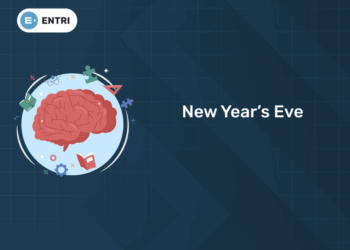Table of Contents
Python is one of the most popular programming languages in the world today and has the distinction of being one of the only programming languages that can be used to develop both web applications and video games. Python features hundreds of built-in functions, but there are also thousands of third-party packages that extend its capabilities even further, allowing you to do everything from creating 3D computer models to developing embedded software on microcontrollers. For an experienced programmer who wants to take their skills to the next level, these are key features of Python you didn’t know you needed. Everyone uses Python these days, but there are still plenty of tricks to learn if you’re looking to work with data or build something truly unique. Let’s take a look at some of the most advanced features of Python that you may not be familiar with and see how they can help you get the job done faster, better, and more efficiently than ever before. Python is one of the most powerful programming languages you can learn today. As it’s used in many different fields, from web development to data science, Python has an extensive and powerful set of features that you may not be aware of as you work with your code on a daily basis. Whether you’re using Python 2 or Python 3, there are many advanced features of python programming language that you can use to make your development faster and easier, such as operator overloading, namespace packages, and syntactic sugars like yield from and list comprehensions.
1)Why should you learn Python?
Python is an interpreted, object-oriented, high-level programming language with dynamic semantics. Its high-level built in data structures, combined with dynamic typing and dynamic binding, make it very attractive for Rapid Application Development, as well as for use as a scripting or glue language to connect existing components together. Python’s simple, easy to learn syntax emphasizes readability and therefore reduces the cost of program maintenance. The interpreter and the extensive standard library are available in source or binary form without charge for all major platforms. (Wikipedia) Python has become one of my favorite languages because I can do so much with so little code. For example, if you wanted to have your computer tell you Hello World every time you opened up a terminal window on Linux, you could accomplish that task by writing only 3 lines of code: #!/usr/bin/env python print(Hello World) Now whenever someone opens up a terminal window on their Linux machine they will see Hello World printed out on their screen! It’s amazing how much functionality Python has packed into such few lines of code! With that said, let’s dive into some characteristics of python that will really take your coding skills to another level.
2) Getting Started
1: Which of the following data types is immutable in Python?
Before you get too excited, it’s important to learn a little bit about what Python is. The language was created by Guido van Rossum and was released in 1991 as a successor to ABC, a teaching language. In its early days, it competed against Perl for dominance (remember that?), but has since grown into one of the most popular languages in use today. It’s available on everything from websites (as with Google) to operating systems like Windows, Mac OS X and even Ubuntu Linux. As we’ll see later on, it’s even been used to build video games and produce commercial software for multiple devices like Kindles or Android phones. If you’re interested in learning more about Python itself, there are plenty of resources online that can teach you all sorts of things. But if you just want to know how to use it, keep reading! #Python features 1: Iterators – When looping through a list, you don’t have to create an entirely new variable each time; instead, Python allows you to use an iterator. This makes your code easier to read and maintainable—and that’s why it matters. Let’s take a look at some example code: for i in range(1, 10): print(i) vs range(1, 10).__next__() #Which do you think is better? Aha! We tricked you… They both accomplish exactly the same thing—but one does so much more elegantly than the other.
“Experience the power of our web development course with a free demo – enroll now!”
🚀 Start Coding Today! Enroll Now with Easy EMI Options. 💳✨
Gain expertise in Django and open doors to lucrative opportunities in web development.
Start Learning With EMI Payment Options3) Data Structures – Lists
The list data structure is a sequence of zero or more values. Individual elements in a list are accessed by their position (index) with respect to other elements. For example, you can use list[0] to access an element at index 0, and list[1:3] to refer to elements at indexes 1 and 2, inclusive. Elements in a list can be mutated using arithmetic operators: list += [‘foo’] will append another element onto your list. Lists are great for storing unordered collections of objects; lists have methods like sort() , reverse() , and count() that make it easy to manipulate them. Lists also support concatenation (joining two lists together), slicing (extracting part of a list), etc. Lists are mutable, which means they can change over time; unlike strings, lists cannot be indexed from 0 up to len(list)-1 . If you want an immutable collection where indexing starts at 0 up to len(list)-1 , then use a tuple instead. The Data Model – Dictionaries: A dictionary stores key-value pairs where both keys and values can be any type. For example, you could use a dictionary to store people’s names (keys) with their ages (values). Unlike lists, dictionaries are unordered collections; they do not have methods like sort() , reverse() , or count() . However, dictionaries support indexing like lists (e.g., d[‘age’] ), but unlike lists, they are mutable; you can add new elements to a dictionary or change existing ones by assigning new values to existing keys.
4) Data Structures – Tuples
In programming, a tuple is an ordered list of elements. They can contain any type, and are often used to return multiple values from a function. Creating tuples in Python is easy — just place your items in parentheses: (1, 2, 3). Tuples are great for assigning related values together that you may need to use at once. For example, returning both a winner and runner-up from a game could be done with two separate variables like winner and runner-up, or it could be handled in one variable with two comma-separated values like (winner, runner-up). Tuples do not have indexes or other methods for locating particular elements. If you want to extract a value, simply name it as if it were a normal variable. To access specific values within a tuple, use indexing. This is similar to accessing lists by their indexes: my_tuple[0] returns item 0 in my_tuple . Indexes start at zero so to get item 1, use my_tuple[1] . The second way to create a tuple is with slicing. Slicing works similarly to how we access lists using brackets, but instead uses parentheses. When referencing a tuple using slicing syntax, we must include an additional comma after our first index: (0,) creates a singleton tuple containing only element 0 from our original tuple. Just like lists, tuples can also be nested inside each other: (1,) , ((2),) , etc. Here’s what each element represents in these examples
“Get hands-on with our python course – sign up for a free demo!”
5) Variables and Operators
Python features a number of operators, but it’s not complicated. The arithmetic operators are used as you would expect: + for addition, – for subtraction, * for multiplication and / for division. There are also additive and multiplicative operators: ** will raise one number to another while // is used to truncate numbers down into a single value (the floor function). Finally there is % , which works just like a modulus operator and returns only remainder after division has been performed. Addition, subtraction, multiplication and division all work as expected in most situations; however where things get more complicated is when you start using variables in your expressions. To use variables in an expression you need to first define them with ‘=’ . For example if we want to add two numbers together we could do so like so: x = 1 y = 2 z = x + y This is simple enough, but what if we wanted to create a variable that held our answer? We can do that by defining it before we try and use it. In fact, Python actually requires us to do so! In order to do that we simply have to change our code slightly: x = 1 y = 2 z = x + y #we have defined our variable now print(z) #so let’s print out our answer!
🚀 Start Coding Today! Enroll Now with Easy EMI Options. 💳✨
Gain expertise in Django and open doors to lucrative opportunities in web development.
Start Learning With EMI Payment Options6) Function Basics
Let’s get a little more technical. Functions in Python are first-class objects. What does that mean? Objects have state (variables) and behavior (methods and attributes). Functions are objects, which means they have both methods and variables. You can assign a function to a variable just like you would any other object. For example def say_hello(): print(Hello!) f = say_hello() f() # Hello! The code above defines a function called say_hello and assigns it to a variable called f. The next line simply calls f, causing it to execute its functionality. This is known as calling or invoking a function. In most cases, functions return values when they’re done executing their functionality. But what if we don’t want our functions to return anything? We use an empty set of parentheses: def no_return(): print(I don’t return anything.) no_return() # I don’t return anything. Functions can also take arguments and/or return values: def sum(x, y): return x + y print(sum(2, 3)) # 5 Functions can also be defined inside other functions. These are referred to as nested functions.
7) Modules, Classes, Files, Debugging
The basic building blocks of a program are modules, classes, files and lines. Most programming languages allow programmers to work on more than one file at a time, but some make it easier than others. In Python, you can only access one module at a time. To get around that problem, developers write classes and store them in files—essentially allowing them to use multiple modules without actually writing multiple modules. Debugging is also something every developer needs to master quickly; even though debugging sounds like an advanced task requiring advanced skills (and it is), using tools that make debugging easier makes things much simpler for beginners as well. These three features are among 10 advanced features of Python you didn’t know you needed.
“Ready to take your python skills to the next level? Sign up for a free demo today!”
8) References, Value Types, Polymorphism, Object-Oriented Programming
When you’re first starting out with a programming language, you may be tempted to see it as nothing more than a list of keywords that make certain things happen on your computer. As you get further along in your learning process, however, you’ll begin to realize just how much thought and nuance goes into developing an effective programming language. As an example, take a look at these advanced features from Python: References (which are similar to pointers in C) and Value Types (which are immutable). Also included is Object-Oriented Programming which lets developers design large programs using small chunks of reusable code that work together. Before you know it, using Python will become second nature! Just don’t forget about references, value types and polymorphism before you graduate from coding newbie status. It’s not that they aren’t important; it’s just that they might seem difficult to grasp at first. The best way to overcome any challenges associated with them is by taking advantage of examples like those provided below! If there’s one thing I learned from my years as a software engineer, it’s that no two companies ever develop their software in exactly the same way. Each organization has its own quirks and needs when it comes to implementing various tools or services. However, when every member of your team knows how to use each tool available to them, they can effectively accomplish their tasks without wasting time figuring out what should be done next. That’s why I always recommend keeping an up-to-date document outlining all of your organization’s processes and procedures for handling specific situations—and most importantly, stick to them religiously!
9) Exceptions, Regular Expressions, Version Control Systems
These are three advanced features that most new users to a programming language don’t know exist. That’s because they get discouraged when all their code is spitting out errors and halting, throwing their computer into a panic attack as it tries to figure out why things are going wrong. So, instead of tackling these problems head-on, you can focus on smaller, easier concepts and eventually come back to these difficult but powerful tools later on in your journey toward Python mastery. Each one offers a unique feature that can make your coding life much easier—if you get comfortable with them down the road, you’ll be glad you did!
The first of these advanced features we’re going to cover are exceptions . Exceptions let you handle error messages gracefully by routing them through an exceptional handler, which lets you send an informative message or even an entire web page telling the user what went wrong. They also informally separate your code into two sections: a main program and error handlers; an arrangement known as modular programming . If used correctly, they can save you lots of time by trapping bugs before they propagate throughout your program.
10) Virtual Environments
Environment-based software installation and management. Creating isolated workspaces for your projects that don’t interfere with each other. You can switch between environments, delete environments you no longer need, install packages specific to an environment, and run scripts with access to only those packages in that environment. Pretty slick! What you’ll need: Virtualenv lets you create virtual (Python) environments by specifying certain versions of python libraries and their dependencies; pip installs packages inside those environments. Basically, it’s a way to manage multiple projects using different versions of libraries without conflict (example: if my environment is set up for Django 1.5 while your app uses 1.6). Why virtualenv matters: How do I use it? [see here] How do I create a new environment? [see here] How do I activate an existing environment? [see here] What are some common pitfalls when using virtualenv/pip? [see here] Note: To use virtualenv, you must have pip installed on your system. This means that depending on how old your computer is, there may be additional steps required before installing these two tools. Installing Anaconda or Miniconda will automatically install both pip and virtualenv on Windows, Mac OS X, and Linux systems. See below for more information about these options as well as requirements for working with them in RStudio. If you are interested to learn new coding skills, the Entri app will help you to acquire them very easily. Entri app is following a structural study plan so that the students can learn very easily. If you don’t have a coding background, it won’t be any problem. You can download the Entri app from the google play store and enroll in your favorite course.











